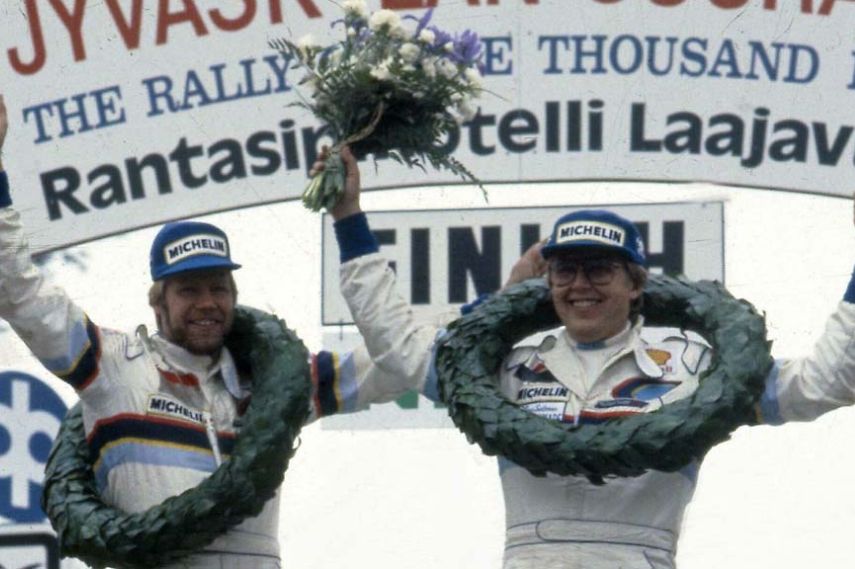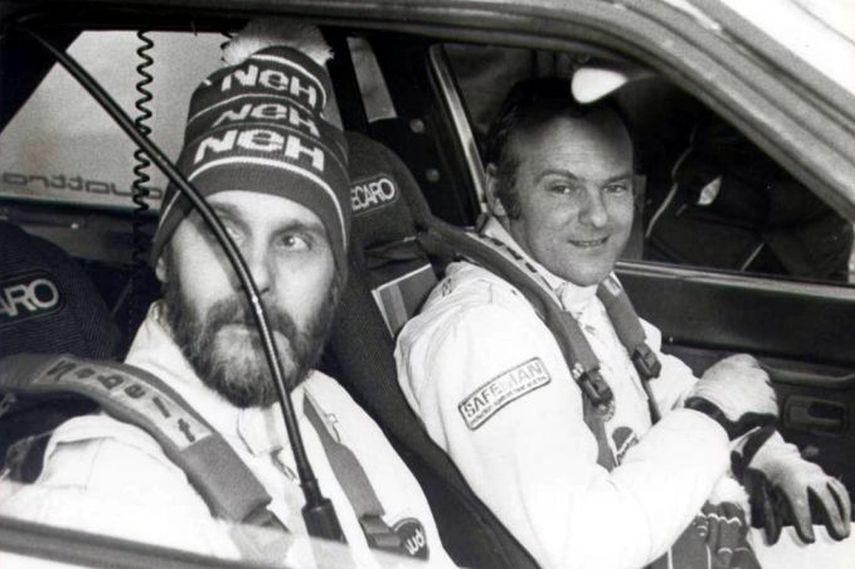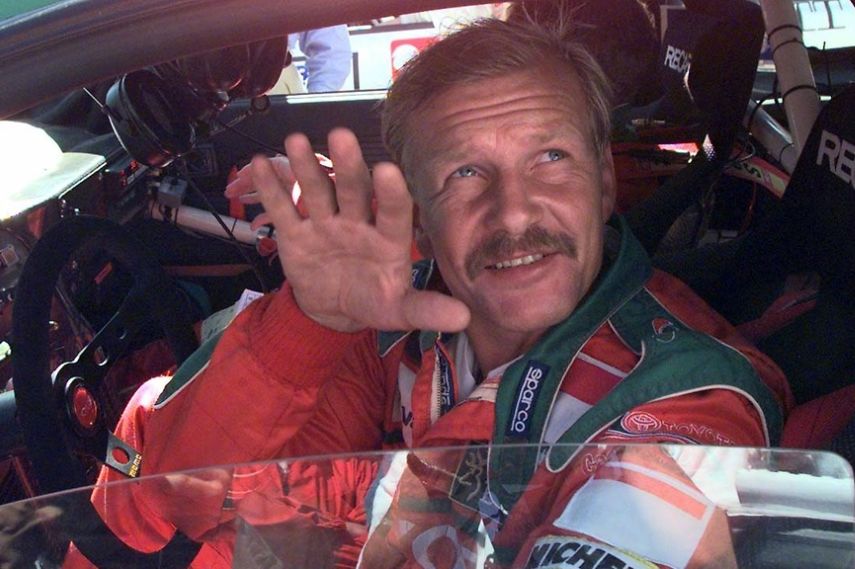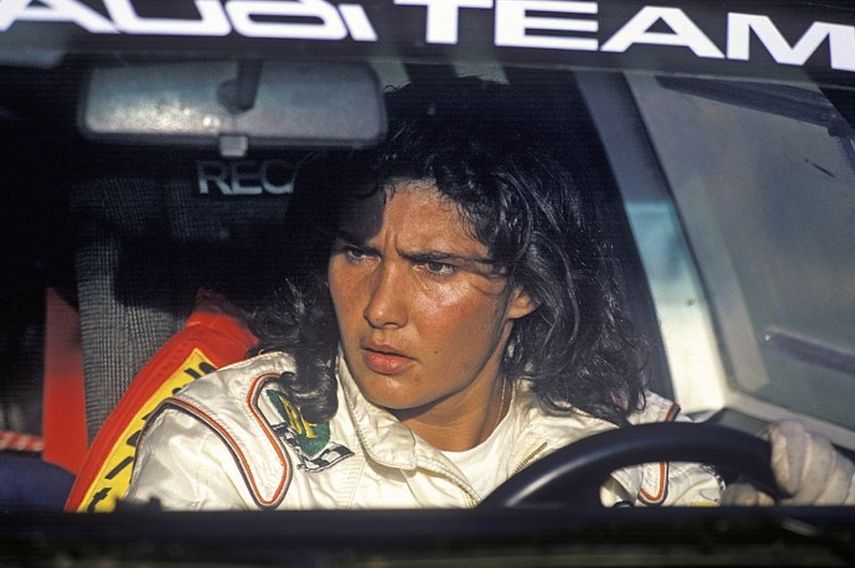Top 10 Group B Rally Drivers
The Group B rally cars era that lasted between between 1982 and 1986 is considered as a golden period in the world rallying history, although the project was stopped because it was too dangerous and resulted in a few fatal casualties. The Group B rally cars reached the peak in terms of engine power and remained the most powerful cars ever to compete in rally, as some cars had almost 600 hp.
To drive such monsters, rally drivers had to truly be extraordinary masters of driving. Some of them achieved their career-best results in this period. Thirty years after, Group B cars were banned in the World Rally Championship, entering the halls of history. Opening those doors once more, we’ve comprised a list of the best drivers who drove the monster cars of the given era.
Group B Rally Drivers That Marked The History
Timo Salonen
Timo Salonen is the number 1 because of a simple reason: he is the record holder with most wins in the Group B era, winning seven times and becoming the 1985 world champion. In the first years of Group B rally cars, Salonen was a member of Team Nissan Europe and he wasn’t competitive with Nissan 240 RS.

Seppo Harjanne and Timo Salonen in 1985
And then, in 1985, he moved to the cockpit of the Peugeot 205 T16 and dominantly won the world’s title, winning five rallies. He was the first driver to win four rallies in a row. He won at Rally Portugal in March and then four times in a row from May to August (Greece, New Zealand, Argentina, Finland).
In 1986, Salonen added two more victories to his CV (1000 Lakes Rally and Lombard RAC Rally), contributing to Peugeot’s second manufacturers’ title. Salonen finished third in the final classification.
Stig Blomqvist
After spending most of his career driving Saabs, Stig Blomqvist joined Audi in 1982, driving Audi Quattro, the first ever four-wheel-drive rally car. The first Audi Quattro was a Group 4 rally car but after the new rules were introduced, it was converted to the car which dominated in the first years of the Group B era.

Bjorn Cederberg and Stig Blomqvist
Blomqvist contributed to Audi’s win of the manufacturers’ title in 1982. In 1983, Blomqvist had won just one WRC event (RAC Rally) and then shined in 1984, winning five rallies. The last of those five wins was achieved with the new, shortened Audi Sport Quattro. It was the most brutal and most powerful of all Group B cars and Blomqvist scored three podiums in 1985. In 1986, Stig competed with Ford RS200 and Peugeot 205 T16, adding one more podium to his account.
Juha Kankkunen
Four-time world rally champion Juha Kankkunen won his first title with Peugeot 205 T16 in 1986. In his victorious season, Kankkunen had won three rallies and scored three more podiums, taking world’s title ahead Lancia’s Markku Alen and securing second consecutive manufacturers’ title for Peugeot.

Juha Kankkunen
Prior to a successful season with Peugeot, Kankkunen had spent three seasons driving the Toyota Celica TCT (Twin Cam Turbo). In 1985, the Japanese Group B car was victorious at two African events: Safari Rally and Rallye Cote d’Ivoire.
Hannu Mikkola
Hannu Mikkola was one of two Audi’s champions in the Group B era. He was a member of Audi Sport team from 1981 to 1987, so he witnessed the birth of the original Audi Quattro and competed with all its reincarnations. His most successful season was 1983, as he’d won the world’s title with four wins and three podiums.

Arne Hertz and Hannu Mikkola
In 1984, Mikkola scored one win (Portugal) and six podiums to finish second in the championship behind teammate Stig Blomqvist. He also contributed to Audi’s manufacturers’ title. In 1985 and 1986, Mikkola scored no more WRC wins but clinched a few wins with different Audi Group B cars at some other international events, such as Olympus Rally in the USA, Hong Kong – Beijing Rally or International Welsh Rally.
Walter Röhrl
Walter Röhrl won his second WRC title in 1982, driving Group 4 Opel Ascona 400. It was the birth year of Group B rally cars and Röhrl was the last driver in rally history who had won the title with a rear-wheel-drive car. In 1983, Röhrl joined Martini Lancia team to drive Lancia Rally 037, contributing to manufacturers’ title for Lancia. With three wins and three podiums, Röhrl finished second in the points.

Walter Rohrl
Another change followed in 1984 when Röhrl joined Audi Sport team. He won just one race (Monte-Carlo) with Audi Quattro A2 and finished 11th in the championship, but his team again took the title. In 1985, the monstrous Audi Sport Quattro came and Röhrl scored three podiums before winning Rallye Sanremo in October. In 1986, Röhrl finished fourth at Rallye Monte-Carlo and it was his last event with Group B car, as Audi withdrew from the championship after a tragedy at Rally Portugal.
Ari Vatanen
Ari Vatanen, the world rally champion in 1981, joined Rothmans Opel Rally Team in 1983 to drive Ascona 400 and Manta 400. Ascona was the victorious car at 1983 Safari Rally against mighty Audi Quattros. For 1984 season, Vatanen joined Peugeot Talbot Sport. Peugeot 205 T16 debuted in the second part of the season and Vatanen scored three wins (Finland, Italy, GB), to finish fourth in the championship.

Ari Vatanen at 1985 Rallye Monte-Carlo
He continued to win rallies at the beginning of 1985 season, taking wins at Rallye Monte-Carlo and Rally Sweden. Vatanen was a title contender but he had a big accident at Rally Argentina in August and missed the rest of the season, so his teammate Timo Salonen took the title. Vatanen spent 18 months recovering from injuries and returned to the motorsport in 1987 when the Peugeot 205 T16 was converted to off-road car for Dakar Rally.
Markku Alen
Markku Alen spent the whole Group B era driving for Lancia’s factory team. In 1983, he won at Tour de Corse with Lancia 037 Rally and finished third in the championship points. Together with Walter Röhrl, he won manufacturers’ title for Lancia. In 1984, Alen was again third in the championship, with one victory (Tour de Corse) and four podiums.

Markku Alen
In 1985, Markku Alen participated in debut 1-2 victory for Lancia Delta S4 at RAC Rally, finishing second behind Henri Toivonen. Alen’s best season was 1986, as he finished second in the championship, with one victory and six podiums. He won the Olympus Rally in the USA, which was the last ever rally in the Group B era.
Jean Ragnotti
Jean Ragnotti deserves his place on the list because of two WRC victories and one podium with Renault 5 Turbo and its Maxi version, against 4WD rival cars. Ragnotti’s last win in the period of RWD cars was at 1981 Rallye Monte-Carlo. In 1982, Audi Quattro appeared, but Ragnotti managed to win at Tour de Corse.

Jean Ragnotti (right) and Jean-Marc Andrie
In the following year, the field was full of 4WD Group B cars, so Ragnotti’s third place at 1984 Tour de Corse was a sensation. The even bigger sensation was Ragnotti’s victory at 1985 Tour de Corse. His #3 Renault 5 Maxi Turbo won with an enormous advantage over Bruno Saby in the Peugeot 205 T16 after most of other rivals retired. Unfortunately, Attilio Bettega lost his life at this rally.
Michele Mouton
Michele Mouton deserves the special place in the history of motorsport as the first and only woman to win WRC events. She also deserves a place on this list because she was Audi’s factory driver from 1981 to 1986, including Group B era. Mouton scored her first WRC win with Audi Quattro at 1981 Rallye Sanremo. In 1982, she won three times (Portugal, Greece and Brazil) and finished second in the championship.

Michele Mouton
In 1983, Michele scored three podiums and finished fifth in the championship. In 1984, she was second at Swedish Rally and fourth at Lombard RAC Rally, contributing to Audi’s manufacturers’ title. During 1985, Michele skipped WRC events and participated in the British Rally Championship and European Rally Championship with three different versions of Audi Quattro.
In 1986, Mouton joined Peugeot and she drove 205 Turbo in two rounds of the World Rally Championship (Monte-Carlo and Tour de Corse) and a full season of the German Rally Championship. She retired in WRC events but scored six wins in Germany to became German rally champion.
Henri Toivonen
Henri Toivonen is the most tragic figure of the Group B era. His death at 1986 Tour de Corse, after he crashed with Lancia Delta S4, is one of the main reasons for the change of regulations and Group B ban. Prior to a fatal crash on May 2, 1986, Toivonen recorded two WRC wins with Lancia Delta S4.

Henri Toivonen and Lancia Delta S4
He won at Lombard RAC Rally, the last round of the 1985 season, which was debut rally for the car. After that, Toivonen won at Rallye Monte-Carlo, the opening round of the 1986 season. Two weeks before death, Toivonen and his co-driver Sergio Cresto were the winners of the Rally Costa Smeralda, the round of the European Rally Championship.
Before switching to Lancia Delta S4, Toivonen scored two WRC podiums with Lancia 037 Rally, at 1984 1000 Lakes Rally and 1985 Rallye Sanremo.
Conclusion
The Group B rally drivers left an indelible mark on the evolution of motorsport, shaping not only the future of rallying but also influencing the broader automotive world. Their ability to control some of the most powerful and technologically advanced cars of their time pushed the boundaries of driving skills and car performance. Despite the dangers that ultimately led to the category’s demise, the fearless and innovative spirit of these drivers inspired generations of motorsport athletes. They paved the way for the development of safety protocols and vehicle technologies seen in modern rally cars and other motorsport disciplines.
The intense competition, along with their relentless pursuit of victory, raised the profile of rallying worldwide, making it one of the most exhilarating forms of motorsport. In essence, Group B drivers, through their unparalleled talents, contributed to the evolution of driver training, car design, and the safety standards that continue to influence motorsports today.
Photos: kaleva.fi, rallylife.cz, roadandtrack.com, motorlegend.com,







